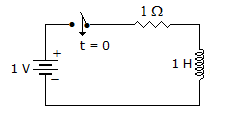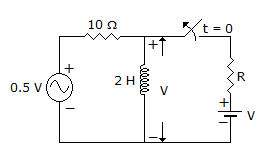Electronics and Communication Engineering - Networks Analysis and Synthesis
Exercise : Networks Analysis and Synthesis - Section 9
- Networks Analysis and Synthesis - Section 14
- Networks Analysis and Synthesis - Section 27
- Networks Analysis and Synthesis - Section 26
- Networks Analysis and Synthesis - Section 25
- Networks Analysis and Synthesis - Section 24
- Networks Analysis and Synthesis - Section 23
- Networks Analysis and Synthesis - Section 22
- Networks Analysis and Synthesis - Section 21
- Networks Analysis and Synthesis - Section 20
- Networks Analysis and Synthesis - Section 19
- Networks Analysis and Synthesis - Section 18
- Networks Analysis and Synthesis - Section 17
- Networks Analysis and Synthesis - Section 16
- Networks Analysis and Synthesis - Section 15
- Networks Analysis and Synthesis - Section 1
- Networks Analysis and Synthesis - Section 13
- Networks Analysis and Synthesis - Section 12
- Networks Analysis and Synthesis - Section 11
- Networks Analysis and Synthesis - Section 10
- Networks Analysis and Synthesis - Section 9
- Networks Analysis and Synthesis - Section 8
- Networks Analysis and Synthesis - Section 7
- Networks Analysis and Synthesis - Section 6
- Networks Analysis and Synthesis - Section 5
- Networks Analysis and Synthesis - Section 4
- Networks Analysis and Synthesis - Section 3
- Networks Analysis and Synthesis - Section 2
1.
If P = 250 W and p.f. = 0.707 lagging, Q =
Answer: Option
Explanation:
Apparent power =  , Q = 250 vars and lagging vars are taken as positive.
, Q = 250 vars and lagging vars are taken as positive.
2.
Figure shows an R-L circuit. The current is i = 1 - e-t. The rate of change of current at t = 1 second is


Answer: Option
Explanation:


3.
Assertion (A): Energy stored in inductance is  and that in capacitance is
and that in capacitance is 
Reason (R): Inductance and capacitance are dual of each other.
Answer: Option
Explanation:
In principle of duality L is dual of C and I is dual of V.
4.
The time constant of the circuit after the switch shown in the figure is opened is


Answer: Option
Explanation:
 .
.
5.
A series RLC circuit is at resonance at 200 Hz. If capacitance is increased to four times, the circuit will be in resonance at
Answer: Option
Explanation:
 . If C becomes four times, f is reduced to half.
. If C becomes four times, f is reduced to half.
Quick links
Quantitative Aptitude
Verbal (English)
Reasoning
Programming
Interview
Placement Papers